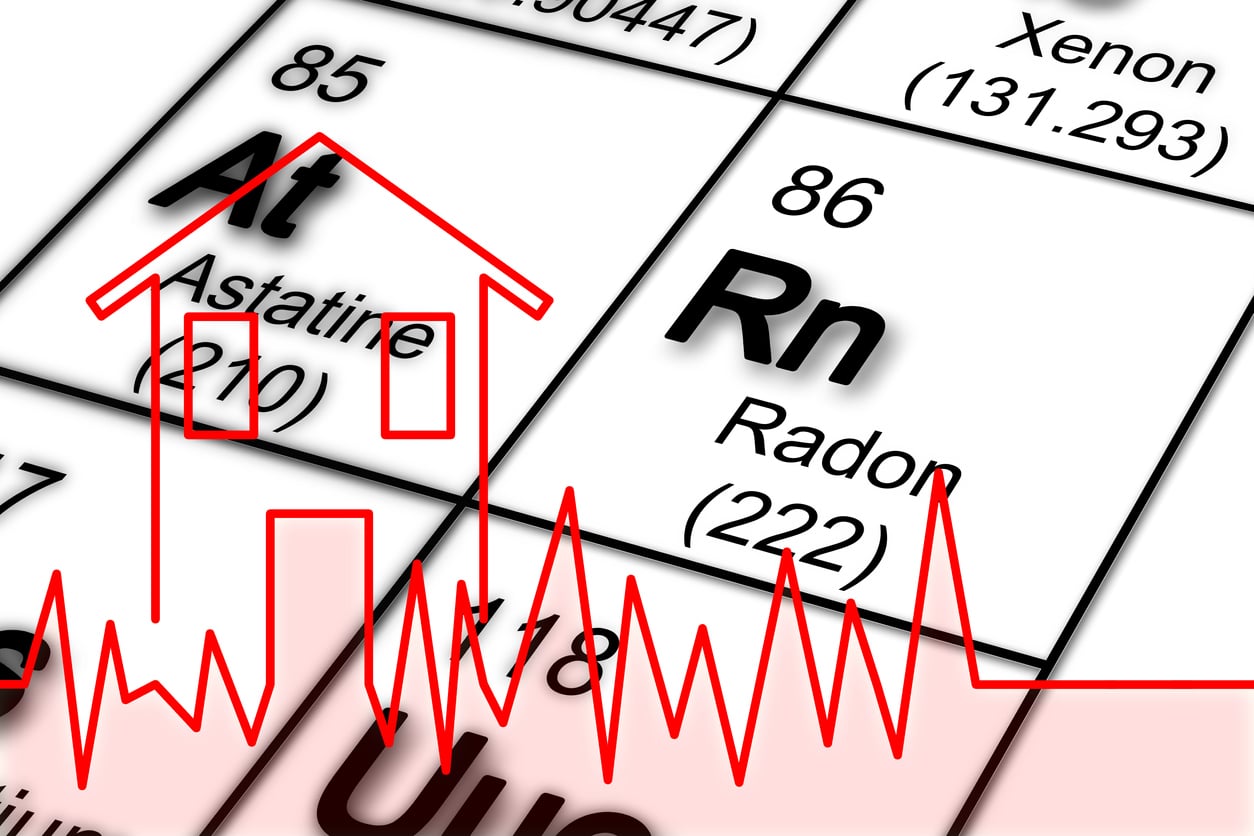2021 Radon Guide: How and Why to Test a Portland Home

If you’ve bought or sold a home (or intend to) any time recently, chances are you’ve heard something about radon testing. And for good reason. Radon testing is increasingly becoming a standard issue in real estate transactions, alongside other hazards like flood zones or seismic retrofitting. But why is it important, and do you need to have your home tested?
To answer these questions and more, we’ll walk you through the basics of the dangers of radon, how to test for it, and what to do if your home tests highly. Say goodbye to feeling in the dark on this subject! Our essential guide lays out everything you need to understand radon risks and radon testing.
What Is Radon, and Why Is It Dangerous?
While the word radon might sound like some futuristic man-made by-product, the truth is that it’s a naturally occurring gas. When uranium, which is found in nearly all soil types, breaks down, it produces a radioactive gas – radon. And since it’s a gas, it moves up out of the soil and into the atmosphere.
So how does it end up in your home, and why is that more dangerous than walking around outside? True, the atmosphere everywhere contains some level of radon. But your home can act as a vacuum for it because the air pressure inside is typically lower than the air pressure of the soil beneath you. The difference in pressure can suck in radon through cracks in the foundation or other openings.
Small amounts of radon are relatively harmless. But if your home sees high levels, the risks are very real because radon causes cancer. According to the EPA, radon is the second leading cause of lung cancer in the United States. That’s after smoking, of course – but before secondhand smoke. And the dangers are particularly high for current and former smokers. The EPA estimates that 21,000 people die of radon-caused lung cancer a year, higher than the number of drunk driving deaths.
How Do I Know If I Should Test My Home for Radon?
The short answer to this question? If your home is a home, you should test it. Radon testing is easy and affordable, and it ensures the safety of your household. You might think that only old homes are at risk, but even new construction can have leaks that heighten your chances of radon exposure. And even if you’ve been living in your home a long time, taking action now can still make a huge difference in your future. The old saying “better late than never” perfectly applies to this situation.
If you’d like to get an idea of what your risk level is before jumping into testing, we recommend checking out Portland’s Radon Risk Map.

Check your zip code to find out if it ranks as high (red), moderate (yellow), or low (green) risk. (For more detailed information about this map and how Portland determines risk levels, see our extensive breakdown here.)
But this map is just a jumping off point – don’t let it make you too comfortable. Even if your zip code is in the green, you aren’t guaranteed safety. Radon risk varies from house to house. Just because your neighbor’s test came back okay doesn’t mean yours will.
How Do I Test for Radon?
Now that we’ve sufficiently scared you, it’s time for some good news. Radon tests are simple, inexpensive, and easy to find. Since you can’t see or smell radon, you will need to acquire a special testing kit. The American Lung Association and the National Radon Program Services at Kansas State University offer excellent, reliable tests. The Oregon Health Authority even gives out free tests to anyone living in a zip code it needs more data on!
Once you receive your kit, you’ll need to leave it out in a safe place and keep all windows and doors closed for the duration of the testing (except for routine entry and exit). Follow the instructions carefully and then return the test to the lab for analysis.
There are two main ways to test for radon: short term tests and long term tests. Long term tests are bound to be the most accurate. However, we recommend that you start with a short term test to get a “snapshot” of what’s happening in your home. Short term tests are less disruptive because of their shorter time span (usually a few days rather than at least 90 days). If your short term test indicates high radon levels, you can then follow up with a long term test to confirm that number.
What, then, constitutes high levels of radon? The air in every home, and even in the outdoors, has some amount of radon in it. The EPA estimates that the average home is 1.3 picocuries per liter (pCi/L). Anything over 4 pCi/L is considered dangerous. If you’re a smoker, the EPA and Surgeon General recommend fixing your home if it tests between 2 and 4 pCi/L as well.
My Home Tested for a High Level of Radon – Now What?
First off, don’t panic if your test comes back at or over 4 pCi/L. In recent years, scientists and contractors have developed some pretty effective methods of “mitigating” radon in residential homes. The most effective way to lower radon levels is to prevent it from entering the home through a strategy called soil suction. Essentially, a contractor will install a system that sucks the radon from the soil beneath your home and vents it into the air above the home. There are various ways of implementing this radon mitigation. What way is right for your home will largely depend on the type of foundation or crawl space you have.
To find out, you’ll need a reliable contractor. Yes, we know, finding a contractor can be stressful. Luckily, though, we’ve found several reliable resources to help you find the right person for the job. For example, the Oregon Health Authority keeps a (not exhaustive) list of Oregon companies with at least one certified radon technician on staff. If you don’t find what you’re looking for there, try searching directory through one of the two main licensing organizations: the National Radon Proficiency Program and the National Radon Safety Board. We also recommend taking a look at the EPA’s handy checklist for selecting a contractor.
And if you’re in the process of buying or selling, try to think of radon testing as one more piece of valuable information. For the buyer, it’s more knowledge about your investment. For the seller, a low radon level result could actually become a great selling point. And as always, a trusted real estate agent can help answer your questions. Check out our top 1% buyers agents or top 1% sellers agents today!


